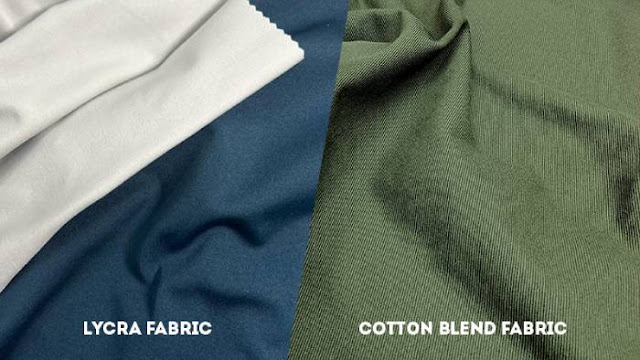Featured
- Get link
- X
- Other Apps
Clothing preservation museums highlight the historical importance of cultural fashion
Clothing preservation museums highlight the historical importance of cultural fashion
Clothing preservation museums stand as veritable time
capsules, preserving and showcasing the historical and cultural importance of
attire from bygone eras. These museums not only display garments, but they also
tell stories of societies, individuals, and the evolution of fashion itself. As
repositories of heritage and style, they offer a unique window into the past,
underscoring the value of cultural fashion as a mirror reflecting the
intricacies of human history and identity.
One such institution that encapsulates the essence of
clothing preservation is the Victoria and Albert Museum's Fashion Gallery in
London. This gallery boasts an exquisite collection spanning several centuries,
showcasing the evolution of fashion from the 18th century to the present day.
The exhibits not only spotlight iconic garments worn by historical figures but
also delve into the craftsmanship and techniques that shaped each era. By
providing context and historical narratives, the Fashion Gallery weaves a
tapestry that connects the past with the present, inviting visitors to witness
the interplay of culture, society, and clothing.
Similarly, the Kyoto Costume Institute in Japan offers a
mesmerizing exploration of cultural attire through its meticulously preserved
collection. From exquisite kimonos that tell tales of Japanese tradition to
Western-influenced clothing that symbolizes cultural exchange, the institute
highlights the crossroads of fashion and identity. By examining the
transformations and adaptations of garments over time, visitors gain insight
into how clothing serves as a reflection of social shifts, global interactions,
and personal expressions.
Museums dedicated solely to preserving cultural fashion,
such as the National Museum of Costume in Portugal, delve deep into the roots
of traditional attire. These institutions celebrate not only the aesthetics of
garments but also the rituals and customs associated with them. Such museums
often collaborate with local communities to ensure the accuracy and
authenticity of their displays, creating a space where cultural pride is
nurtured and preserved for generations to come.
The historical importance of cultural fashion preservation
museums goes beyond aesthetics. They serve as living textbooks, offering
educational insights into how clothing has evolved to reflect political,
economic, and social dynamics. The Getup Institution at the Metropolitan Museum
of Art in New York City, renowned for its annual Met Gala, does precisely this.
Through themed exhibitions, it explores the intersections of fashion, art, and
history, presenting garments as vessels of meaning that transcend mere appearances.
Beyond showcasing well-known attire, clothing preservation
museums unearth hidden gems that might otherwise be lost to time. Vintage
clothing museums, such as The Academy at the Fashion Establishment of
Technology (FIT) in New York City, unearth treasures that reveal the stories of
ordinary people and their sartorial choices. These artifacts serve as reminders
that every garment, no matter how modest, carries within it the essence of its
era, encapsulating the dreams, aspirations, and daily lives of those who wore
it.
These museums also spotlight the craftsmanship that goes
into creating cultural attire. The painstaking techniques, intricate
embroidery, and skilled tailoring behind each piece of clothing become evident
as visitors get an up-close look at the details. By appreciating the labor and
artistry embedded in these garments, audiences gain a newfound respect for the
individuals who transformed fabric into works of wearable art.
The role of clothing preservation museums in preserving
cultural heritage becomes particularly vital in a world marked by globalization
and homogenization. As local traditions and techniques risk being overshadowed
by mass production and fast fashion, these institutions stand as bastions of
authenticity. They underscore the significance of preserving the unique
characteristics that make each culture's attire distinct and meaningful.
The narrative of clothing preservation museums is not
static; it evolves alongside fashion itself. Contemporary exhibitions in these
museums often explore themes of sustainability, ethics, and innovation. They
engage with conversations about the environmental impact of fashion and the
need for responsible consumption. By juxtaposing historical garments with
modern challenges, these museums provoke thought and dialogue about the future
trajectory of fashion.
In the age of digital technology, clothing preservation
museums have expanded their reach beyond physical spaces. Virtual exhibitions
and online platforms enable a global audience to explore these collections and
engage with cultural fashion from the comfort of their homes. This
accessibility fosters cross-cultural learning and appreciation, bridging
geographical divides and promoting a sense of interconnectedness.
In conclusion, clothing preservation museums serve as
custodians of cultural history, narrating tales of identity, craftsmanship, and
evolution through the lens of attire. By preserving and showcasing garments
from various eras and regions, these institutions breathe life into fabric,
turning it into a vehicle for stories and memories. The cultural significance
of these museums lies not only in the clothes they display but also in their
ability to foster understanding, respect, and celebration of diverse human
experiences. In a world where trends come and go, these museums stand as
anchors, reminding us of the enduring importance of the clothing that has
shaped societies and legacies across time.
- Get link
- X
- Other Apps
Popular Posts
Difference between Lycra and cotton Lycra
- Get link
- X
- Other Apps


Comments
Post a Comment